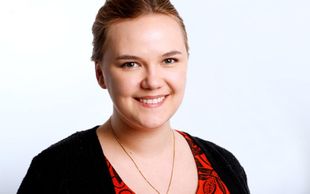Disorientated by Iceland
by Charles Gittins
Icelandic is a relatively easy language for native speakers of English (like me) to learn. No, really, it is. Save for a few special characters, there is no new alphabet to learn. Many aspects of grammar, particularly syntax and verb morphology, are identical in the two languages. And, of course, there is the huge amount of essentially ‘free’ vocabulary that the common Germanic roots of Icelandic and English afford us.
OK, there are some inflectional case endings to master, but really nothing a few large alcoholic drinks, some rote-learning and a sympathetic listener can’t fix.
But coming back to the idea of common Germanic vocabulary, Icelandic really is a godsend for the English-speaking learner. I live in a hús. I count my money is hundraðs and þúsunds. I have five fingurs on each hönd. And so on and so forth.
We all know, however, that most vocabulary obtains its meaning not simply from its dictionary definition, but from all manner of cultural filters and contexts. Aye, there’s the rub (how’s that for a good illustration of the point?).
Nothing typifies the chasm between strict semantics and meaning in use than the Icelandic compass points. These four seemingly harmless words are responsible for several of the grey hairs I now tragically sport.
On the face of it, the compass points in our beloved Icelandic are a Germanicist’s wet dream – they are of course pure, simple cognates of the English equivalents:
north = norður
south = suður
east = austur
west = vestur
It could not be simpler. After literally seconds of effort, the studious vocabulary learner can triumphantly put down their Icelandic primer, throw on a jacket or coat, and go and join their mates down the pub.
Ah, would that were so. Because, poor gullible fools (myself included), these words are anything but easy. They are, in fact, the work of the devil. The words norður, suður, austur and vestur contain scores of unpredictable and slippery semantic nuances and are used by Icelanders in ways which defy any kind of logical categorisation.
The points of the compass are supposed to be a universally accepted and implemented way of describing geography and direction. But not in Iceland. In Iceland, they are an intricate web of lies and contradictions spun by Icelanders for no apparent good reason, other than perhaps having a bit too much time on their hands (hendur). The compass points in Icelandic simply cannot be learnt.
Equally impossible is the task of mapping out this entire linguistic conspiracy in the space of one short article. A couple or three telling examples will have to suffice to make the point.
One weekend morning a couple of years ago, my Icelandic husband announced we were off on a road trip to buy sheep at some far-off farm. “Oh great! Where are we going?” I asked. “Vestur,” came the reply. (Aside: when you’re not particularly interested in a topic – like sheep, for instance – Icelanders can witter on interminably; when you are actually trying to extract essential practical information, one-word answers or blank-faced silence is common.)
I quickly consulted a map of Iceland armed with the cultural assumptions surrounding the notion of ‘westness’ that my childhood had furnished me with. The only way of going more or less west from Reykjavik on dry land is to go to Keflavík. “Aha, so we’re off to Keflavík,” I thought in my naivety. “West to Keflavík.” Imagine my surprise when we left Reykjavik and drove due north (by all means, Google the coordinates) to a place near Reykhólar. Why on earth was I told we were going vesturwhen we were clearly going norður?
“Ah, but that’s in Western Iceland, so that’s why we say we’re going vestur,” comes the slightly snivelling reply. And, yes, if we make an effort, we can quite happily get our minds around that explanation. But the whole sordid charade unravels completely when you ask Icelanders to place the return journey on the good old compass.
My Icelandic step-family lives in Hella in Southern Iceland (Suðurland). So, according to the aforementioned Western-Iceland ‘theory’, I must go suður when travelling from Reykjavik to Hella.Suður to Suðurland, no? Noooo. I am in fact going austur. Ah, OK. So they’ve now abandoned the direction-according-to-region system they swore by a moment ago and taken up a map-based system instead. OK. A little fickle, perhaps, but who isn’t? Hella is indeed more or less east of Reykjavik, so let’s by all means go austur.
Now, if one goes east from A to B, one must inevitably go west to get from B back to A. This is pure, simple, incontrovertible Cartesian-type logic. So, having successfully driven austur to Hella, the journey from Hella back to Reykjavik must be vestur. Must be. Well, disabuse yourselves, dear learners of Icelandic, your logic fails you again. The correct answer is, in fact, suður. Yes, that’s right. In this case, ‘suður’ means ‘west and slightly north’. How’s that common Germanic etymology thing working out for you now? Examples of this sort of nonsense abound.
Despite the fact that Icelandic usage has clearly made a complete pig’s breakfast of the beautifully simple and unequivocal compass system that the world has given it, Icelanders will swear blind that their understanding and use of the words norður, suður, austur and vestur is perfectly logical and transparent.
They will enthusiastically oblige if you ask them to illuminate you on the subject. But each subsequent attempt at an explanation contradicts the previous one and leaves everybody concerned feeling frustrated, unsatisfied and world-weary. To be fair, though, they don’t seem to have any problem puzzling the whole thing out for themselves and for that I admire them.
For my part, I am more than happy to put in the effort to master my accusative, dative and genitive endings and to memorise the mammoth list of Icelandic strong-verb vowel changes. But I refuse to waste any more of my short time on this planet trying to second-guess Icelanders who have, for reasons best known to themselves, decided to call black white and white flame-red. I’d never succeed anyway. Especially when they can’t even agree amongst themselves on how the compass-point system actually works.
I have therefore banished these four frightful words from my Icelandic vocabulary and now confine myself to using the more prosaic, but infinitely safer, “to Reykhólar”, “to Hella” and “back to Reykjavik”.
I refuse to get lost in this north-south-east-west semantic blizzard. To paraphrase Meat Loaf: “I would do anything for Icelandic, but I won’t do that.”












